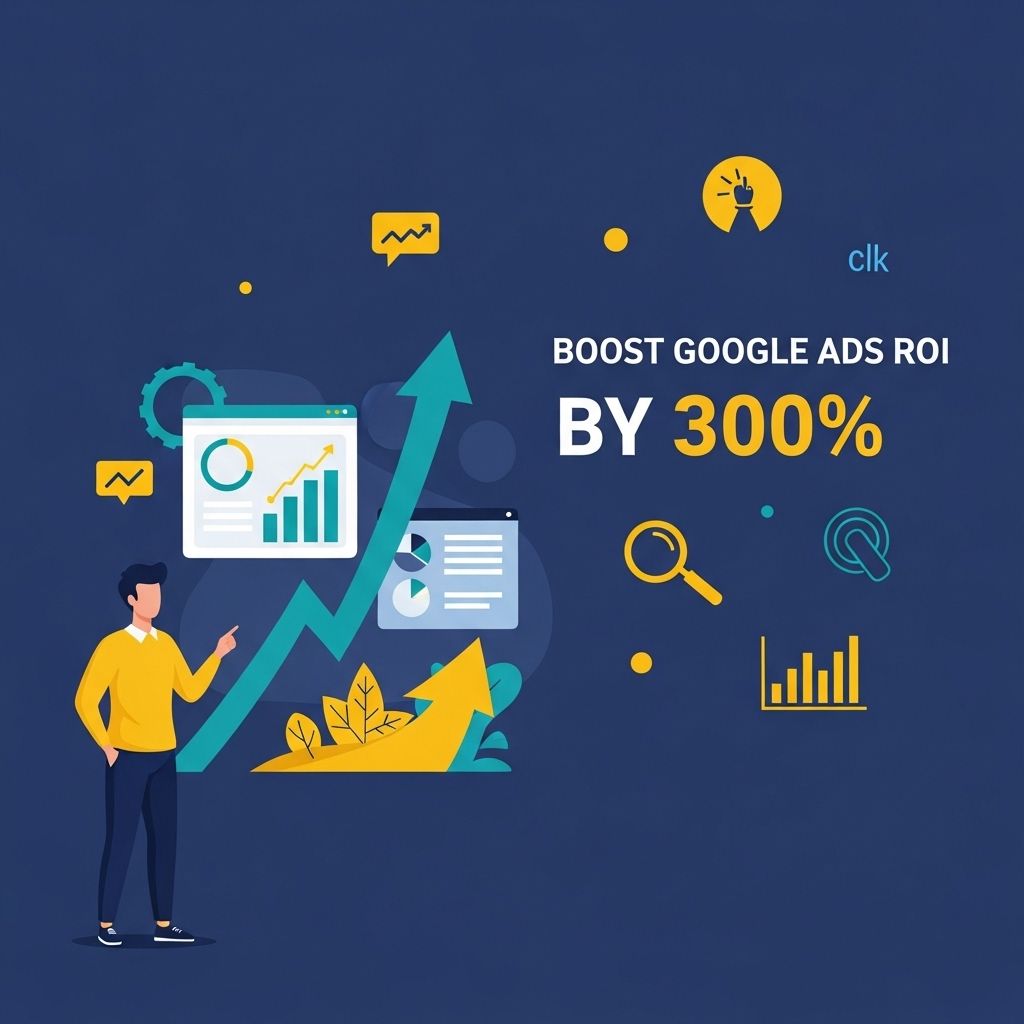In an ever-evolving digital landscape, maximizing the return on investment (ROI) from Google Ads has become a paramount goal for marketers and businesses alike. With millions of dollars pouring into ad budgets each year, finding methods to enhance performance is essential. This article will delve into advanced strategies that can help you significantly boost your Google Ads ROI, potentially by as much as 300%.
Understanding Google Ads ROI
ROI in the context of Google Ads refers to the revenue generated from your ads versus the amount spent on those ads. To boost your ROI effectively, you must first understand several key metrics that contribute to ad performance:
- Click-Through Rate (CTR): The percentage of people who click on your ad after seeing it.
- Conversion Rate (CR): The percentage of users who take a desired action after clicking your ad.
- Cost per Click (CPC): The amount you pay for each click on your ad.
- Customer Lifetime Value (CLV): The total revenue you can expect from a customer over their entire relationship with your business.
Keyword Research and Optimization
One of the foundational elements of successful Google Ads campaigns is effective keyword research. Here’s how you can optimize your keyword strategy:
Utilize Keyword Tools
Take advantage of Google’s Keyword Planner, SEMrush, and Ahrefs to identify high-volume and low-competition keywords. Focus on:
- Long-Tail Keywords: These keywords usually have lower competition and higher conversion rates.
- Negative Keywords: Prevent your ads from appearing in irrelevant searches by using negative keywords, which can save budget and improve CTR.
Campaign Structuring
Structuring campaigns properly can significantly affect performance. Consider the following:
| Campaign Type | Goal |
|---|---|
| Search Ads | Generate leads or sales |
| Display Ads | Increase brand awareness |
| Shopping Ads | Drive eCommerce sales |
| Video Ads | Engage customers |
Ad Copy and Creative Optimization
Your ad copy is your first impression; thus, it should be compelling and relevant. Here are techniques to enhance your ad content:
A/B Testing
Constantly test different versions of your ads to determine which performs better. Experiment with:
- Headlines: Use numbers, questions, or strong calls to action.
- Descriptions: Highlight unique selling propositions and include relevant keywords.
Utilize Ad Extensions
Make use of ad extensions to provide additional information and improve visibility:
- Sitelink Extensions: Link to specific pages on your website.
- Call Extensions: Allow users to call your business directly from the ad.
- Location Extensions: Help customers find your business location.
Targeting the Right Audience
Understanding your audience is crucial in maximizing ROI. Use these targeting methods to reach your ideal customers:
Demographic Targeting
Focus on age, gender, parental status, and household income to tailor your campaigns:
- Identify your top customer segments and customize ads accordingly.
- Refine your audience targeting based on previous customer interactions.
Remarketing Campaigns
Re-engage users who previously interacted with your website:
- Create tailored ads that address their specific interests.
- Utilize dynamic remarketing to show users the exact products they viewed.
Efficient Budget Management
Proper budget allocation can dramatically impact your ROI. Consider these practices:
Daily Budget Adjustments
Monitor performance regularly and adjust daily budgets based on data:
- Increase budget for high-performing campaigns.
- Reduce spend on underperforming ads.
Bid Strategies
Employ strategic bidding methods that align with your goals:
- Target CPA (Cost Per Acquisition): Optimize to get as many conversions as possible at a set cost.
- Maximize Clicks: Use this for campaigns aimed at increasing traffic.
Tracking and Analytics
To effectively boost ROI, you need proper tracking in place:
Implement Google Analytics
Integrate Google Analytics with your Google Ads account to track performance comprehensively:
- Analyze user behavior post-click, including bounce rate and time spent on the site.
- Utilize conversion tracking to measure the success of your ads in driving desired actions.
Regular Performance Reviews
Set a regular schedule to review campaign performance:
- Identify trends in data and make informed adjustments.
- Assess which keywords and ad copies contribute most to your ROI.
Conclusion
Boosting Google Ads ROI by 300% is an ambitious but attainable goal. By employing targeted keyword strategies, optimizing ad copy, refining audience targeting, managing budgets efficiently, and leveraging analytics, you can enhance your advertising performance significantly. Remember, the key to success lies in continuous testing and adaptation to the ever-changing digital marketing landscape.
FAQ
What are effective strategies to increase Google Ads ROI?
To boost Google Ads ROI, focus on targeted keyword research, improve ad copy for higher click-through rates, utilize negative keywords, optimize landing pages for conversions, and regularly analyze campaign performance to make data-driven adjustments.
How can I optimize my Google Ads campaigns for better ROI?
Optimize your Google Ads campaigns by using A/B testing for ad variations, leveraging automation tools for bidding strategies, segmenting your audience for personalized ads, and adjusting your budgets based on performance metrics.
What role does keyword selection play in Google Ads ROI?
Keyword selection is crucial for Google Ads ROI as it determines the relevance of your ads to search queries. Using high-intent keywords that align with user intent can significantly improve ad performance and conversion rates.
How important is landing page optimization for Google Ads success?
Landing page optimization is vital for Google Ads success as it affects the user experience and conversion rate. Ensure your landing pages are fast, mobile-friendly, and contain clear calls to action to maximize ROI.
Can I track my Google Ads ROI effectively?
Yes, you can track your Google Ads ROI effectively by setting up conversion tracking, utilizing Google Analytics, and analyzing metrics like cost per conversion, return on ad spend, and overall revenue generated from your campaigns.




